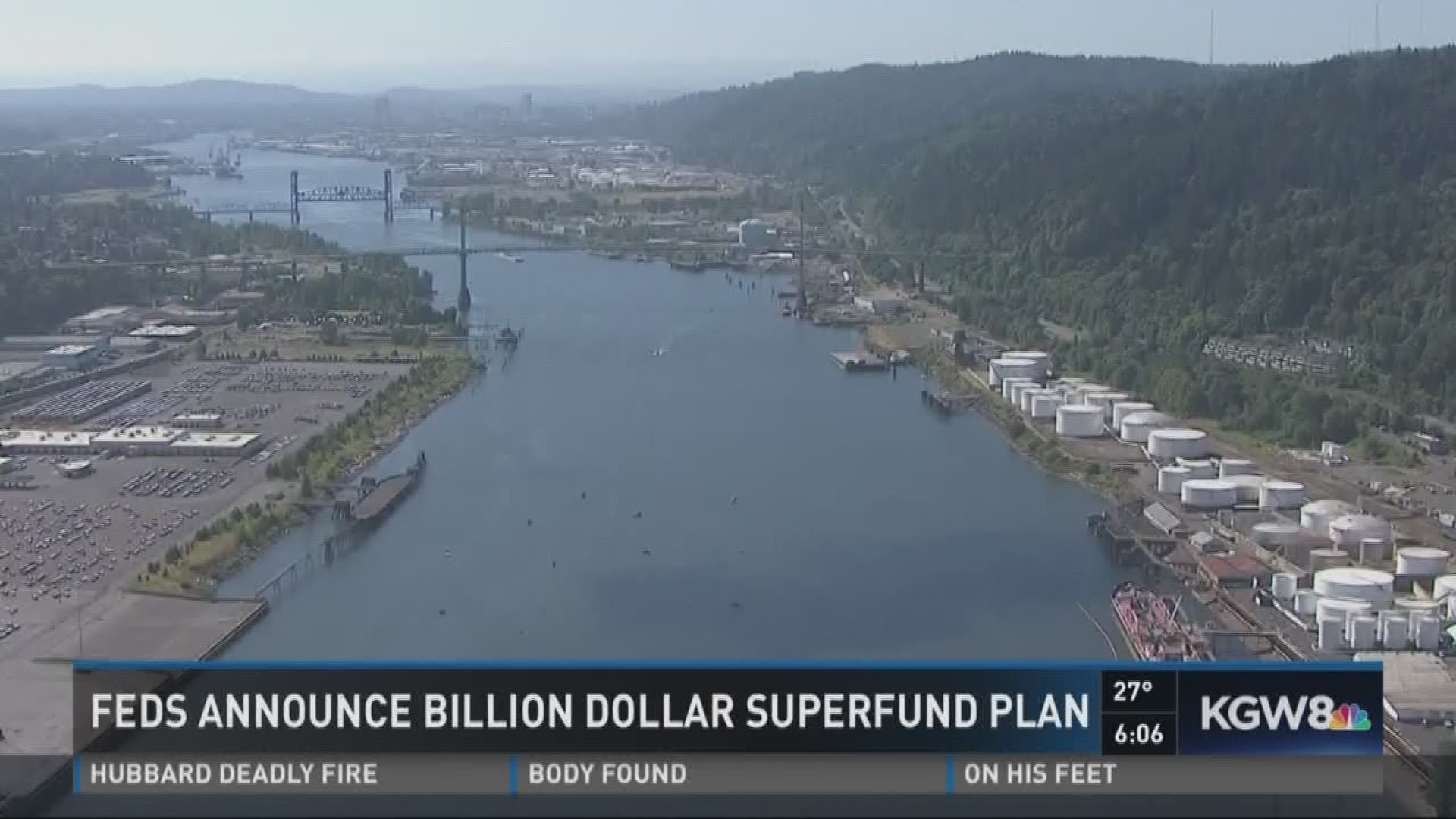PORTLAND, Ore. – The Environmental Protection Agency has tacked on an additional $250 million onto its plan to clean the Portland Harbor Superfund Site after taking thousands of public comments into account.
In June, the EPA released a proposed plan that pledged to dredge or cap about 265 cubic acres of contaminated sediment over seven years, and leave 1,900 acres to be monitored as they recover naturally.
Critics said that plan didn’t do enough to clean the 10-mile stretch of the Willamette River, polluted by more than 150 companies over the course of a century, mainly on the Northwest waterfront, Swan Island and in St. Johns.
A protest was staged after the EPA released the proposed plan, and the public submitted more than 5,000 comments over a three-month period. Ninety percent of the comments called for more aggressive cleanup.
On Jan. 6, the EPA released its final plan. It upped the price tag to $1 billion and added another 100 acres to the sediment that will be dredged or capped. The cleanup will take 13 years of active work.
The EPA says the new plan further reduces health risks to people, fish and wildlife. At the end of the active work period, the EPA says the risk of contamination-related cancer, such as eating contaminated fish, will be reduced by 100 times. The cleanup won’t eliminate all health risks.
“Under the final plan, we’ll be removing more contaminated sediment sooner, which means risks will be lower and the river will be safer faster,” said Dennis McLerran, the EPA’s Regional Administrator for the Pacific Northwest and Alaska. “Input from the public, tribes, state and local government, environmental groups and business and industry helped us hone our plan and make it more responsive to people’s concerns.”
Tribal concerns about the viability of fishing in the Willamette River was one of the main reasons the EPA increased the budget for the cleanup plan.
Travis Williams, Executive Director of Willamette Riverkeeper, said the new plan made "substantial positive changes."
“While we originally requested a bit more dredging, we think this plan strikes a good balance, and will do a lot of good for the river,” he said.
In a joint statement, Mayor Ted Wheeler and Commissioner Nick Fish said the city of Portland is embracing the new plan:
“We are pleased that the EPA has released its plan for the Portland Harbor cleanup. The City is committed to a clean river and is prepared to lead in building coalitions and partnerships to get this cleanup done right and done as soon as possible. This work is going to be done locally and it’s our priority to have it done by local workers. The time to act is now.”
The Superfund cleanup will be paid for by responsible parties, including companies that polluted the river as well as public entities. The final bill won't be known for a year or two.
The city is one of the responsible parties that will have to pay for the cleanup, albeit not one of the largest players.
The Port of Portland is also responsible for helping to foot the bill, and will likely pay much more than the city. In a statement, spokesman Steve Johnson said the new plan raises concerns and will probably cost closer to $2 billion.
"Despite our disappointment, we will continue to engage with EPA and the State of Oregon, with the hopes of lifting the cloud on Portland Harbor to promote new investment and a healthy environment," Johnson said.
The port is suing the chemical company Monsanto, which manufactured polychlorinated biphenyls (PCBs) that contaminated the Willamette River. PCBs were used in electrical equipment, and are associated with cancer and other health problems. The port says Monsanto knew how toxic PCBs were and hid the information.
Monsanto said PCBs were legal at the time they were not responsible for the contamination because they did not directly release the chemicals in to the Willamette River.
About the Portland Harbor Superfund Site
Superfund sites are some of the most contaminated areas in the United States. The Superfund designation makes cleaning the sites a priority to protect public health and the environment.
The Portland Harbor Superfund site is one of the largest Superfund sites in the country in terms of contamination and cleanup cost. It was added to the EPA’s priority list in 2000.
Toxics, including heavy metals, PCBs, polynuclear aromatic hydrocarbons (PAHs) dioxin, and pesticides contaminate the area. There are some spots where the contamination is particularly intense.
The biggest public health threat to people is eating fish such as carp, bass and catfish that live in the site (salmon and steelhead passing through are safe to eat). People will not be able to eat unlimited amounts of fish even after the cleanup is complete, due to high levels of mercury and other pollutants originating from further up the Willamette River and pollution remaining at the Superfund site.

